La excavación forestal ha experimentado una transformación notable, en particular con la llegada de equipos especializados como las excavadoras forestales. Estas potentes máquinas han revolucionado la forma de realizar las tareas en el sector forestal, ofreciendo eficiencia, precisión y conciencia ecológica en sus operaciones.
Evolución de los equipos forestales

La evolución de los equipos forestales cuenta una intrigante historia de transformación dentro de la industria forestal. Al principio, el trabajo dependía en gran medida del trabajo manual, en el que las personas talaban árboles y limpiaban el terreno manualmente utilizando herramientas básicas. A medida que la demanda de madera aumentó y la tecnología avanzó, la industria fue testigo de un cambio hacia la mecanización.
En las primeras etapas, máquinas sencillas como las sierras y los tractores a vapor comenzaron a reemplazar algunas tareas manuales. Estos avances aumentaron significativamente la productividad y la eficiencia, reduciendo la intensidad laboral asociada con el trabajo forestal.
Con el tiempo, las innovaciones tecnológicas allanaron el camino para la creación de equipos especializados diseñados específicamente para tareas forestales. Esto marcó un momento crucial en la historia de la industria, ya que se introdujeron máquinas diseñadas específicamente para este fin, como cosechadoras y autocargadores. Estas máquinas estaban diseñadas para realizar diversas operaciones forestales, desde la tala de árboles hasta el transporte de troncos, lo que agilizaba todo el proceso.
En los últimos años, la aparición de equipos sofisticados, como las excavadoras forestales, ha revolucionado aún más el sector. Estas máquinas modernas integran tecnología de vanguardia y ofrecen precisión, potencia y características ecológicas inimaginables en épocas anteriores.
Características principales de las excavadoras forestales
Las excavadoras forestales cuentan con una serie de características notables que las distinguen en el ámbito de la maquinaria especializada. Estas máquinas están diseñadas específicamente para desplazarse y realizar tareas complejas en áreas forestales, ofreciendo capacidades incomparables esenciales para diversas operaciones forestales.
Sistemas hidráulicos
Una de las características más destacadas de las excavadoras forestales son sus avanzados sistemas hidráulicos. Estos sistemas proporcionan un control y una precisión excepcionales, lo que permite a los operadores maniobrar el equipo con la máxima exactitud. Los mecanismos hidráulicos permiten movimientos suaves y rápidos, cruciales para tareas delicadas como la eliminación selectiva de árboles sin causar daños innecesarios al entorno circundante.
Accesorios especializados
Las excavadoras forestales vienen equipadas con una amplia gama de accesorios especializados diseñados para tareas forestales específicas. Estos accesorios, que incluyen pinzas, sierras y trituradoras, permiten que la máquina realice una multitud de funciones. Desde sujetar y levantar troncos pesados hasta cortar y procesar árboles de manera eficiente, estos accesorios mejoran la versatilidad y la eficiencia de la excavadora, lo que la convierte en una herramienta indispensable en las operaciones forestales.
La integración de estas características clave no solo aumenta el rendimiento y la precisión de las excavadoras forestales, sino que también garantiza su idoneidad para una amplia gama de tareas dentro del sector forestal. Estas máquinas están diseñadas para ofrecer resultados óptimos y, al mismo tiempo, priorizar la sostenibilidad ambiental y la eficiencia operativa.
Beneficios de las excavadoras forestales
Las excavadoras forestales ofrecen una multitud de ventajas que inciden significativamente en la eficiencia, la eficacia y las consideraciones medioambientales dentro de la industria forestal. Estas máquinas especializadas han transformado la forma en que se realizan las tareas forestales, proporcionando numerosas ventajas que contribuyen tanto al éxito operativo como a la preservación ecológica.
Eficiencia en la eliminación de árboles
Una de las principales ventajas de las excavadoras forestales reside en su notable eficiencia a la hora de talar árboles. Estas máquinas simplifican lo que antes era un proceso que requería mucha mano de obra, reduciendo drásticamente el tiempo y la mano de obra necesarios para tareas como talar, desramar y procesar árboles. La precisión que ofrecen sus sistemas hidráulicos y accesorios especializados garantiza una eliminación rápida y precisa de los árboles, lo que mejora la productividad general.
Consideraciones ambientales
Las excavadoras forestales están diseñadas con un enfoque especial en la sostenibilidad ambiental. Su capacidad para realizar la eliminación selectiva de árboles minimiza el impacto en la vegetación y los hábitats circundantes. Al apuntar con precisión a árboles específicos para eliminar y preservar otros, estas máquinas ayudan a mantener el equilibrio ecológico de las áreas forestales. Además, la menor necesidad de mano de obra en la eliminación de árboles disminuye las perturbaciones causadas por los métodos tradicionales.
Equilibrar la eficiencia y la conciencia ecológica
El uso de excavadoras forestales logra un equilibrio entre eficiencia y conservación del medio ambiente. Si bien estas máquinas agilizan las tareas, lo hacen teniendo muy en cuenta la minimización de las perturbaciones ecológicas. Su precisión y versatilidad permiten a los operadores ejecutar operaciones forestales con una perturbación mínima del ecosistema, lo que muestra una combinación armoniosa de productividad y gestión ambiental.
En resumen, las excavadoras forestales representan un cambio de paradigma en las operaciones forestales al ofrecer una eficiencia sin igual en la eliminación de árboles y, al mismo tiempo, demostrar un compromiso con la preservación del medio ambiente. Estas máquinas son un testimonio de los avances tecnológicos que benefician tanto la productividad de la industria como la sostenibilidad ecológica.
Aplicaciones de las excavadoras forestales
Las excavadoras forestales encuentran amplias aplicaciones en un espectro de tareas dentro del sector forestal, mostrando su versatilidad y eficiencia en diversas operaciones cruciales para el funcionamiento de la industria.
Operaciones de tala
Las excavadoras forestales desempeñan un papel fundamental en las operaciones de tala. Su capacidad para extraer y manipular madera de manera eficiente, junto con su precisión en el corte selectivo, las hace indispensables. Estas máquinas se desplazan por áreas boscosas, eliminando con cuidado los árboles designados para la tala y minimizando los daños a los árboles y hábitats circundantes. Sus accesorios especializados, como pinzas y sierras, facilitan la manipulación y el procesamiento de troncos con la máxima eficiencia.
Limpieza de terrenos y preparación del sitio
Además de la tala, las excavadoras forestales son fundamentales para limpiar el terreno y preparar el terreno. Ya sea para preparar el terreno para la reforestación, crear cortafuegos o limpiar áreas para proyectos de construcción, estas máquinas se destacan en la realización de diversas tareas. Su agilidad y precisión les permiten desplazarse por terrenos difíciles y áreas con vegetación densa, limpiando el terreno de manera eficaz y minimizando las alteraciones al medio ambiente.
Versatilidad en las tareas forestales
-
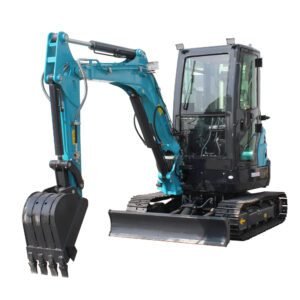 Excavadora 3.5T
Excavadora 3.5T -
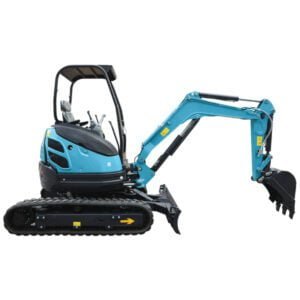 Fabricante personalizado de excavadoras 2.5T
Fabricante personalizado de excavadoras 2.5T -
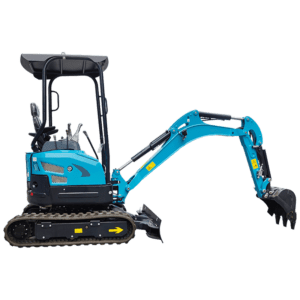 Fabricante personalizado de miniexcavadora 2.0T
Fabricante personalizado de miniexcavadora 2.0T -
 Fábrica de miniexcavadoras de China 1.7T
Fábrica de miniexcavadoras de China 1.7T -
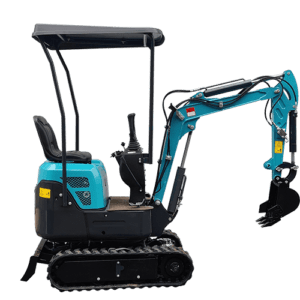 Fabricante de miniexcavadora de China 1.0T
Fabricante de miniexcavadora de China 1.0T -
 Empresa de miniexcavadoras de 2,5 t a medida
Empresa de miniexcavadoras de 2,5 t a medida -
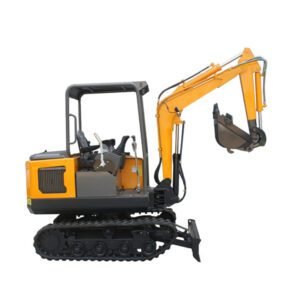 Empresa de miniexcavadoras Odm 2.0T
Empresa de miniexcavadoras Odm 2.0T -
 Empresa de miniexcavadoras 1.2T de China
Empresa de miniexcavadoras 1.2T de China
Las excavadoras forestales son muy versátiles en sus aplicaciones. Desde la eliminación de especies invasoras hasta la facilitación de los esfuerzos de restauración del hábitat, estas máquinas se adaptan a una amplia gama de tareas relacionadas con la silvicultura. Su capacidad para manejar varios accesorios permite a los operadores cambiar de funcionalidad rápidamente, lo que las hace adecuadas para una variedad de tareas más allá de las operaciones convencionales de tala y desmonte de tierras.
Las excavadoras forestales son herramientas versátiles y adaptables en la industria forestal, que sirven como herramientas invaluables para tareas que van desde la extracción de madera hasta la restauración ecológica. Sus aplicaciones multifacéticas subrayan su importancia para mejorar la eficiencia y mantener las consideraciones ambientales en las operaciones forestales.
Cómo elegir la excavadora forestal adecuada
La selección de la excavadora forestal adecuada implica tener en cuenta varios factores críticos para garantizar un rendimiento y una eficiencia óptimos para tareas específicas dentro de la industria forestal.
Consideraciones sobre tamaño y potencia
El tamaño y la potencia de una excavadora forestal son aspectos cruciales a tener en cuenta a la hora de elegir una. Las excavadoras más grandes, con mayor potencia, son más adecuadas para realizar tareas más importantes, como operaciones de tala a gran escala o desmontes extensos. Las excavadoras más pequeñas, por otro lado, ofrecen una mayor maniobrabilidad y son adecuadas para tareas que requieren precisión en espacios más reducidos u operaciones más delicadas.
Versatilidad de los accesorios
Otro aspecto fundamental a la hora de elegir la excavadora forestal adecuada es evaluar la versatilidad de sus accesorios. La capacidad de utilizar una variedad de accesorios, como pinzas, trituradoras o sierras, mejora la adaptabilidad de la máquina para diferentes tareas forestales. Las excavadoras con accesorios intercambiables permiten a los operadores personalizar la máquina según los requisitos específicos del trabajo, maximizando su utilidad.
Eficiencia operacional
Tenga en cuenta la eficiencia de combustible de la excavadora, los requisitos de mantenimiento y los costos operativos generales. Optar por una máquina que equilibre el rendimiento con el ahorro de combustible garantiza la rentabilidad a largo plazo. Además, el mantenimiento y la facilidad de servicio confiables contribuyen a minimizar el tiempo de inactividad y maximizar la productividad de la máquina.
Adaptabilidad al terreno
Evalúe la capacidad de la excavadora para desplazarse por los diversos terrenos que se encuentran comúnmente en las operaciones forestales. Una excavadora equipada con características como orugas robustas o trenes de rodaje diseñados para terrenos difíciles proporciona estabilidad y maniobrabilidad, lo que le permite trabajar de manera eficiente en entornos difíciles sin comprometer el rendimiento.
Características de seguridad y comodidad para el operador
Un diseño de cabina cómodo y ergonómico, junto con funciones de seguridad avanzadas, influyen significativamente en la eficiencia y la seguridad del operador. Busque excavadoras equipadas con características como asientos cómodos, controles ergonómicos, mejoras de visibilidad y tecnologías de seguridad que reduzcan la fatiga del operador y mejoren la seguridad general durante la operación.
La consideración cuidadosa de estos factores garantiza la selección de la excavadora forestal adecuada para satisfacer los requisitos específicos del trabajo, optimizando la productividad y garantizando al mismo tiempo la seguridad y la rentabilidad.
Consejos de mantenimiento para excavadoras forestales
El mantenimiento regular es fundamental para garantizar el rendimiento óptimo, la longevidad y la seguridad de las excavadoras forestales. Implementar una rutina de mantenimiento integral ayuda a mitigar posibles problemas y garantiza que la máquina funcione con su máxima eficiencia.
Inspecciones regulares
Las inspecciones frecuentes y exhaustivas de la excavadora son fundamentales. Revise todos los componentes, incluidos los sistemas hidráulicos, las orugas, el motor, los accesorios y los elementos estructurales para detectar signos de desgaste, fugas o daños. Detectar y abordar los problemas de manera temprana puede evitar daños adicionales y reparaciones costosas.
Lubricación y limpieza
La lubricación adecuada de las piezas móviles es fundamental para el buen funcionamiento de la excavadora. Siga las recomendaciones del fabricante sobre los programas de lubricación y utilice los lubricantes adecuados para cada componente. Además, mantener la máquina limpia de residuos, barro y otros contaminantes evita el desgaste prematuro y la corrosión.
Mantenimiento de vías
El mantenimiento de las orugas es esencial para la estabilidad y la maniobrabilidad de la excavadora. Inspeccione periódicamente las orugas para detectar desgaste, tensión y daños. Asegúrese de que la tensión y la alineación sean adecuadas y reemplace rápidamente los componentes de las orugas desgastados o dañados para evitar una tensión innecesaria en la máquina.
Cuidado del sistema hidráulico
El sistema hidráulico es la columna vertebral de las excavadoras forestales. Compruebe los niveles de líquido hidráulico, las fugas y el estado de las mangueras y los accesorios. Cualquier signo de fugas o irregularidades en el sistema hidráulico debe solucionarse de inmediato para evitar posibles averías.
Reemplazo de filtros y fluidos
Siga los intervalos recomendados para reemplazar filtros y fluidos, incluidos el aceite de motor, los fluidos hidráulicos y los filtros de combustible. Los filtros limpios y los fluidos nuevos contribuyen al funcionamiento sin problemas y a la longevidad de los componentes de la excavadora.
Capacitación de operadores en mantenimiento
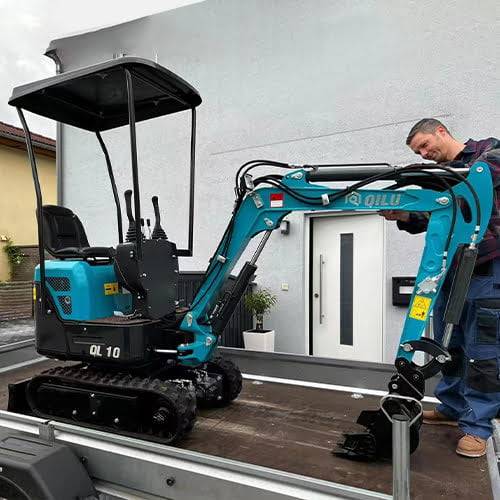
Los operadores debidamente capacitados desempeñan un papel importante en el mantenimiento. Asegúrese de que los operadores estén capacitados para identificar posibles problemas, realizar controles de rutina e informar cualquier anomalía de inmediato. La conciencia y la diligencia de los operadores pueden evitar que los problemas menores se conviertan en problemas mayores.
Mantenimiento Programado
Siga estrictamente el mantenimiento programado que se describe en el manual del fabricante. El mantenimiento regular realizado por técnicos calificados garantiza que la excavadora reciba atención profesional, identificando y rectificando posibles problemas antes de que afecten el rendimiento.
Si siguen estos consejos de mantenimiento con diligencia, los operadores y propietarios pueden mejorar significativamente la confiabilidad, la eficiencia y la longevidad de las excavadoras forestales, reduciendo el tiempo de inactividad y maximizando la productividad.
Precauciones de seguridad en excavaciones forestales
La excavación forestal implica el manejo de maquinaria pesada en entornos dinámicos y potencialmente peligrosos. Priorizar las medidas de seguridad es esencial para prevenir accidentes y garantizar el bienestar de los operadores y de quienes se encuentran en las inmediaciones.
Capacitación y certificación de operadores
La capacitación y certificación adecuadas para los operadores de excavadoras son fundamentales. Los operadores deben realizar programas de capacitación integrales que cubran los procedimientos operativos, los protocolos de seguridad, la respuesta ante emergencias y el manejo de equipos. La certificación garantiza que los operadores estén capacitados y tengan conocimientos sobre prácticas de excavación seguras.
Evaluación y mitigación de riesgos
Es fundamental realizar evaluaciones de riesgos exhaustivas antes de comenzar cualquier tarea de excavación forestal. Identifique los posibles peligros, como terreno irregular, obstáculos elevados, vida silvestre o proximidad a otros trabajadores. Implemente medidas para mitigar los riesgos, como establecer zonas de exclusión, usar señalización e implementar protocolos de comunicación.
Inspección y mantenimiento de equipos
Las inspecciones y el mantenimiento periódicos de las excavadoras forestales son imprescindibles para la seguridad. Asegúrese de que el equipo se encuentre en óptimas condiciones de funcionamiento y de que todas las funciones de seguridad funcionen correctamente. Aborde cualquier problema identificado de inmediato para evitar accidentes debido a fallas del equipo.
Equipo de protección individual (EPI)
Exigir el uso de equipo de protección personal adecuado para todo el personal que participe en excavaciones forestales. Esto incluye cascos de seguridad, ropa de alta visibilidad, guantes y botas con punta de acero para mitigar los riesgos asociados con la operación de maquinaria pesada y el trabajo en áreas forestales.
Procedimientos de operación seguros
Establecer procedimientos operativos claros y estandarizados para las tareas de excavación forestal. Hacer hincapié en las prácticas seguras, como mantener una distancia segura con respecto a la maquinaria en funcionamiento, seguir los caminos designados y respetar las capacidades de carga y los límites operativos de la excavadora.
Comunicación y coordinación
Mantenga una comunicación eficaz entre trabajadores, operadores de equipos y supervisores. Utilice la comunicación por radio o señales para garantizar instrucciones claras y oportunas, especialmente en entornos ruidosos o con obstáculos donde la comunicación verbal puede resultar complicada.
Planificación de respuesta a emergencias
Desarrollar y comunicar protocolos de respuesta ante emergencias para abordar posibles accidentes o situaciones imprevistas. Asegurarse de que todo el personal conozca los procedimientos de emergencia, incluidos los protocolos de primeros auxilios, las rutas de evacuación y los métodos para informar incidentes.
Al priorizar la seguridad a través de la capacitación, la gestión proactiva de riesgos, el cumplimiento de los protocolos de seguridad y el mantenimiento del equipo en óptimas condiciones, los riesgos asociados con la excavación forestal se pueden minimizar significativamente, creando un entorno de trabajo más seguro para todos los involucrados.
Innovaciones futuras en la excavación forestal
El futuro de la excavación forestal presenta avances prometedores que apuntan a revolucionar aún más la industria, mejorando la eficiencia, la sostenibilidad y la seguridad a través de tecnologías y prácticas innovadoras.
Automatización y Robótica
La integración de la automatización y la robótica está llamada a transformar la excavación forestal. Se están desarrollando sensores avanzados, inteligencia artificial y funcionalidades autónomas para automatizar ciertas tareas, como la tala precisa de árboles o la clasificación de la madera. Los sistemas automatizados pueden optimizar las operaciones, mejorar la precisión y reducir la necesidad de intervención humana en actividades repetitivas o peligrosas.
Prácticas Sostenibles
Las futuras innovaciones en la excavación forestal se centran en la sostenibilidad. Existe un creciente énfasis en el desarrollo de maquinaria y prácticas ecológicas que minimicen el impacto ambiental. Los fabricantes están explorando opciones de combustible alternativo, como excavadoras eléctricas o híbridas, que reducen las emisiones y la contaminación acústica. Además, existe un enfoque en la creación de maquinaria que utilice materiales biodegradables o reciclables, lo que contribuye a un enfoque más ecológico en las operaciones forestales.
Mayor eficiencia y precisión
Los avances tecnológicos están orientados a mejorar la eficiencia y precisión de las excavadoras forestales. Las innovaciones en tecnología de sensores y algoritmos de aprendizaje automático permiten que las excavadoras tengan un mejor control y adaptabilidad para navegar por terrenos complejos. Los sistemas de GPS y mapeo mejorados permiten un posicionamiento y operación más precisos, optimizando tareas como la tala de árboles o el desmonte de terrenos.
Soluciones de gestión forestal sostenible
El futuro de la excavación forestal incluye el desarrollo de soluciones de gestión integrales. Las plataformas de software integradas que combinan análisis de datos, modelado predictivo y monitoreo en tiempo real tienen como objetivo brindar a los administradores forestales información valiosa. Estas soluciones ayudan a optimizar la asignación de recursos, mejorar la planificación y respaldar los procesos de toma de decisiones para la gestión forestal sostenible.
Adaptación a condiciones ambientales cambiantes
Las innovaciones en excavación forestal están evolucionando para adaptarse a las condiciones ambientales cambiantes. El cambio climático y su impacto en los bosques requieren maquinaria que pueda soportar y funcionar de manera eficaz en paisajes diversos y en evolución. Se están explorando innovaciones en durabilidad de materiales, tecnologías adaptativas al clima y diseños centrados en la resiliencia para abordar estos desafíos.
El futuro de la excavación forestal está preparado para la transformación, impulsada por un compromiso con la sostenibilidad, los avances tecnológicos y un enfoque proactivo para abordar las necesidades cambiantes de la industria. Estas innovaciones tienen como objetivo revolucionar las prácticas, mejorar la productividad y minimizar el impacto ambiental para un futuro más sostenible.
Preguntas frecuentes
- ¿Son forestales? excavador¿Se utiliza únicamente en operaciones de tala?
- ¿Cómo contribuyen las excavadoras forestales a la sostenibilidad ambiental?
- ¿Qué programa de mantenimiento se recomienda para las excavadoras forestales?
- ¿Pueden las excavadoras forestales ser operadas por personas no capacitadas?
- ¿Cuáles son los desarrollos futuros previstos en la tecnología de excavación forestal?

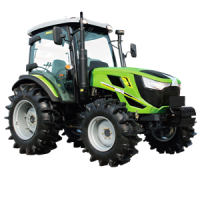
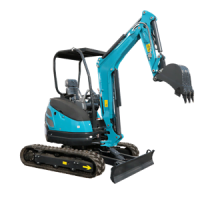
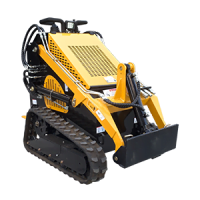

-1.png)